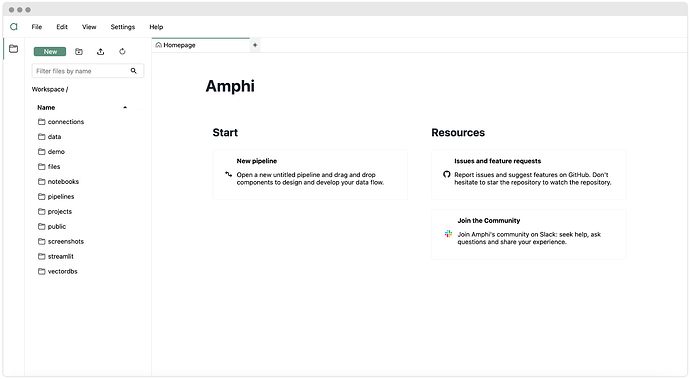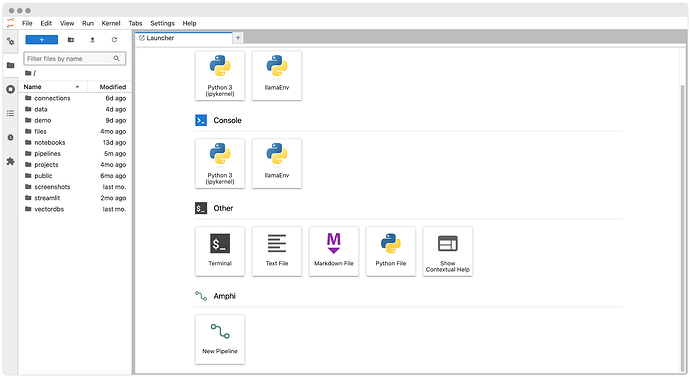Amphi is a free and open-source software that can be installed either as a standalone Python-based application (Amphi ETL) or as a JupyterLab extension (Amphi for JupyterLab). Both versions are generally referred to as Amphi and offer the same functionality. This getting started guide applies to both.
 Requirements
Requirements
To install and use Amphi, you must have Python installed on your machine.
The latest versions of the following browsers are currently known to work:
- Firefox
- Chrome
- Safari
- Edge
It is recommended to install Amphi within a virtual environment. You can use any virtual environment manager such as conda, or venv.
If you’re not familiar with virtual environment, follow the instructions below:
Create a virtual environment
1. Create a virtual environment, for example using venv:
For MacOS users, the python command might be python3 instead python.
python -m venv amphi_venv
2. Activate the environment
For Windows:
amphi_venv\Scripts\Activate.ps1
For MacOS/Linux:
source amphi_venv/bin/activate
Once activated, the virtual environment’s name typically appears before the username in the terminal. Then, run the installation and start commands within the virtual environment to ensure Amphi is installed in the intended location and to avoid conflicts with other installations.
 Install
Install
| Amphi ETL (standalone) | Amphi for JupyterLab (extension) |
|---|---|
pip install amphi-etl |
pip install jupyterlab-amphi |
pip install --upgrade amphi-etl |
pip install --upgrade jupyterlab-amphi |
[!NOTE]
If you prefer to install Amphi’s Jupyterlab extension through the extension manager, make sure to install
jupyerlab-amphipackage
 Usage
Usage
To start Amphi ETL (standalone), simply run:
amphi start
Use the following parameters to specify your:
- workspace (where you can access files and create pipelines on your system),
- IP address to expose
- port to use
 Deploy on your local machine
Deploy on your local machine
amphi start -w /your/workspace/path
 Deploy on a server
Deploy on a server
For deploying on a server, you need to specify -i 0.0.0.0 to expose Amphi and access it through the internet. Optionaly specify a different port.
amphi start -w /your/workspace/path -i 0.0.0.0 -p 8888
To update Amphi ETL, run the following:
pip install --upgrade amphi-etl

